‘Diversity of Korean Street Arts’
Street Arts, Where Did They Start and Where Are They Headed?
Since 2016, the Korean Arts Management Service (KAMS) publishes a series of ‘Diversity of Korean Arts’ introducing Korean artists and productions: Theater, Dance, Interdisciplinary Arts, and Musical. With these publications, the diversity of Korean contemporary arts has been shared with overseas markets and professionals. This year, KAMS focuses on the scene of Korean Street Arts. And it will publish in Korean, English, and French. This article was originally written for the preface of the publication ‘Diversity of Korean Street Arts: Diaglogue & Spectrum.’
Preface Written Together
Korean street arts have constantly changed, without any fixed academic concept. Those in the street arts scene have influenced each other, creating a variety of forms. The preface written together is an attempt to symbolically show the trajectory of Korean street arts which are still in progress. Planners, artists and researchers working on street arts wrote this preface together. Participating anonymously, the authors wrote their part without knowing who the others are. In this way, they added, deleted, modified or reinforced things in the text written by another author. Such a text was sent to the next author, with traces of modifications kept intact. The editing team received the text written by the authors and adjusted its length for this book. The original text, which makes clear how it was modified, is available on the website of TheApro Focus at Korea Arts Management Service. We hope that this text expands to become a “Wikipedia of street arts written together” which could give us an overview of Korean street arts. Our thanks go to every author who participated in this preface written together. (Editing Team)
Street Arts, Where Did They Start and Where Are They Headed?
|
|
|
#Where_Is_the_Street #Cultural_Democracy
In Europe, street arts began in order to share the arts with the general public who hadn’t had many opportunities to enjoy the arts (“cultural democracy”). The street was a place where artists could meet the public easily. However, for street arts that grew with May 68, streets and plazas didn’t just mean places for meeting the public. In such a sociopolitical context, a street was a space for certain movements where citizens raised political voices. One of the voices was about refusing the elite arts and accepting one’s own language. Either consciously or unconsciously, street artists focus on notions such as “freedom” and “resistance.” That is because they explore diversified expressions by letting go of any limit of styles. In addition, the use of such notions is linked to the aforementioned context regarding the content and spirit of street arts. The street and the arts aren’t in a relationship like a two-way arrow heading to the opposite ends. In street arts, the street is not just a physical background which is noisy and distracting. Instead, the street could also become the main material or theme of a work. Moreover, the street’s context (i.e. sociopolitical situation) could also be a production’s main element.
Street arts are an art form which consists in meeting audiences in public or private spaces in different ways, thus ensuring relational esthetics. In street arts, the audience and the artist are not in a clear-cut relationship such as the one between the target and the actor or the receiver and the producer. Rather than that, they act mutually. Some people argue that it is necessary to experiment with the possibility of the arts on the street and to demonstrate it to the audience. Such an argument comes from a very narrow view of street arts.
In this process, street arts have also questioned the role of streets and public spaces. The difficulty shared by Korean street artists is the one generated in “the procedure to obtain permission to use spaces and cooperation with relevant institutions.” This clearly reveals the administrative barrier that makes us feel that public places are privately owned by institutions. Under these circumstances, street arts have exerted its “questioning power” by trying to overthrow the space with guerilla events and by temporarily occupying urban spaces filled with capital and cars. By doing so, street arts have allowed people to breaking away from their daily life and to have a new view of the city. This has been the “questioning power” of street arts. Recently, street artists have dealt with stories of disappearing old city centers and collaborated with urban refugees who are victims of gentrification. In such a way, they have visibly presented works focused on the violence of capital that shakes the city. At this point, street arts go into private spaces to interpret a bigger picture of the city and publicness. In this regard, the site-specific aspect of street arts still remains. Considering this, street arts go beyond just providing the public with opportunities to enjoy art, thus becoming a genre of urban sociology.
|
|
|
#Public_Spaces_and_Street_Arts #Audience_on_the_Street
A public space is one of the most important issues in street arts. In our city, public spaces, where we can raise our voices and be connected to others, are gradually disappearing today to be replaced by commercial spaces based on capitalism. It is worth reflecting on this issue. Frédéric Rémy is the artistic director of “Le Festivald’ Aurillac” (one of the world’s representative large-scale street arts festivals) and “Scènes de la rue” (street arts festival in Mulhouse). According to Mr. Rémy, public spaces filled with freedom, where people can raise their public voices, are disappearing. Under these circumstances, street arts festivals should “make publicness more visible in today’s privatized spaces. Seeking the possibility of regenerating publicness is thus the role of street arts festivals for him. A street artist coming to a city should not be regarded as someone sacred and unapproachable. And there shouldn’t be a fixed relationship between the artist and the audience. Instead, local residents should be able to observe how an artist is making artwork in the city, thus viewing the artist as a “citizen.” That is the true existence of a street artist.
It is necessary to seriously think about street arts in Korean public spaces which are closely connected to local governments’ support and cooperation. To be more specific, we could consider the following questions. How do artists survive in public spaces as they create their artwork against the background of representative local spaces characterized by publicness? To which degree could Korean street arts become brave in places led by the public sector? To which degree are today’s street arts in public spaces becoming flexible while facing so many refusals, deletions and non negotiable situations? We need to reflect on these questions. Do street arts, which have infiltrated into public spaces, need to exist to ensure the positive results of local governments’ cultural projects and local residents’ safe cultural enjoyment? How could artists meet people on the street by means of their bodies and the definition of “publicness” we have in mind? Asking themselves these questions is another challenge to be met by today’s street artists.
|
|
|
Civil complaints in public spaces are also interesting. During the creative process of street arts, artists naturally reveal scenes, acts and sounds which are “evaluated” by the citizens occupying the space together. Here, a street artist could be treated as an intruder of the space or as a disrupter of citizens’ peaceful daily life. Throughout the period of their creative activities, artists face in opportune moments as they become disrupters of the “publicness” of public spaces. Moreover, some people could criticize the artists or break into their activities either during or after the performance at festivals, unexpectedly. These war-like moments are also something street artists need to endure. It is necessary to clearly distinguish between the freedom brought by the large space(i.e. the street) and the limits set by public spaces. Changing the name of the genre to “arts in the public space”, which was mentioned before, may be a phenomenon led by the arts scene. Nevertheless, it is important to seriously think about what has been the meaning of the world called “street”, we have wanted and what has been the freedom we have desired in that world.
|
|
|
#Environment_Surrounding_Street_Arts
Korean street arts started in earnestas the Gwacheon Festival changed its name from the Gwacheon Madanggeuk Festival(focused on traditional Korean outdoor performances) to the Gwacheon Hanmadang Festival (focused on street performances) in 2003. Some experts view the traditional Korean outdoor performance, which has existed for a long time, as the beginning of Korean street arts. Nonetheless, street arts with a greater variety of expressions and spaces came to people’s mind as the Gwacheon Festival began to use the term “street performance.” Traditional Korean outdoor performances and street performances both take place in outdoor places but their roots are different. The traditional Korean outdoor performance started in the late 1960s as artists adopted traditional Korea theater styles like the mask dance in order to deal with political themes such as dictatorship, economic inequality and division of the two Koreas. Interestingly, the starting point of traditional Korean outdoor performances is very similar to that of Europe’s contemporary street performances, which began by using culture to spread political issues in the era of May 68. On the stylistic front, artists of the traditional Korean outdoor performance actively accept the audience’s existence and they also talk to them. They sometimes involve the audience in their performance. This is also a technique that is often found in some of European street performances called “héritage du théâtre forain.”
|
|
|
Since the 1986 Asian Games and 1988 Seoul Olympics, international performances have been presented in Korea. Stimulated by these performances, Korean artists have carried out a greater variety of experiments. They not only sought the diversity of expressions but they also experimented with performance spaces, leading to the beginning of street arts in the country. Mostly taking place at festivals, performances “outside the theater” started meeting the public. Based on Koreans’ common experiences of protests or games on the street, artists came to consider the street as a space of their artistic expression.
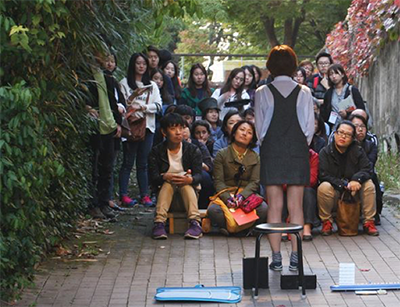
It is also not to miss the fact that the history of Korean street arts is closely related to the street culture that has been experienced by audiences. Street performances as movements of political resistance were on the decline as the culture of protests weakened in the 1990s. In the 21st century, the 2002 FIFA World Cup took place and this occasion brought a large-scale street culture to the country, led by national sports. The audience of a street performance experience a moment of becoming one of the “people on the street,” watching something with others and empathizing with them. Such an experience makes them remember that they were part of a picture of the street in a certain era. In this way, they also regard themselves as participants of street culture. Today’s Korean citizens are still seeing street arts led by protest culture and parades. Examples of this includethe “Queer Parade” on the street, “Mad Pride” about the survival and pride ofmental patients, “Black Tent” serving as a theater in a plaza that resistsblack lists and "Camino de Ansan" commemorating the sinking of MV Sewol. These events form a street arts culture made not only by artists but also by citizens as “participants on the street.”
#Important_Trends_of_Korean_Street_Arts
#Environment_of_Creation_and_Distribution_of_Streeet_Arts
In 2005, performances in the form of street arts appeared for the first time in Korea (‘Orpheus’ by Momggol and ‘Street Number 4-59’ by Homoludens Company). Before serving as pioneers of street performances, they experienced diverse performances during their studies Europe. Meanwhile, international street performances(mostly from Europe) were staged in Korea and Korean street arts companies also co-produced performances with international partners (‘Sortie de cuisine’, ‘Ku-do’, ‘1+1’, ‘Nal Boa-Look at me’ and ‘Pixel Mountain’). Consequently, young performing artists full of curiosity came to try street performances.
|
[ |
|
In 2008, Creative VaQi presented ‘Sancho’s Dream’ at the Seoul Marginal Theatre Festival and in 2009, Project Jamsang staged‘Under Construction’ at the Gwacheon Festival. These two performances were characterized by their active use of videos. Later on, inorder to encompass different styles including videos, A case in point is “media façade” which of ten makes use of a building’s windows and walls. This has become a video-based genre of street arts by generating spectacular effects through the large surface of video mapping.
In 2009, Korea Street Arts Association was founded, thus enabling street artists to actively exchange information and human resources. Moreover, Korea came to have numerous festivals focused on street arts: Ansan Street Arts Festival (2004), Goyang Lake-Park Arts Festival (2005), Street Arts Market (2013), Seoul Street ArtsFestival (2016), Gwangju Street Arts Festival (2017), Pohang Street ArtsFestival (2019) and Ulsan Promenade Festival (2019). In addition, the Suwon Theatre Festival also turned into a street arts festival in 2018, greatly contributing to the spread of street arts.
In 2015, Seoul Street Arts Creation Center was opened. As the center began to serve as a creative base camp equipped with production, education, distribution and rehearsal facilities, the Korean street arts scene ushered in another topographical change. In particular, young creators have contributed to the fostering of street arts. Indeed, those coming to the center are as follows: 1. creators who feel artistic thirst in the framework of the traditional performing arts like the theater and who are willing to make their own creative world by doing new forms of work or by getting out of the theater space. 2. creators who are willing to make performances with their own colors, making use of their physical capacity and letting go of texts.
All of the aforementioned street arts festivals are organized by local governments. Such local festivals’ major goal is to provide local residents with opportunities to enjoy the arts and culture and to invigorate the urban space. The trend of l local governments’ festivals actively adopting street arts is the result of combining political interests and the nature of street arts.
In the context of decentralization, local governments have established cultural foundations and run the existing spaces including arts and culture centers. However, it was not enough for them just to present high-quality performances in their local areas and to provide more opportunities to enjoy culture They needed events where local cultural foundations’ chairmen and local governors could greet a huge number of citizens(electors) and offer them things to enjoy. Street arts then emerged as a realistic alternative. Since people can enjoy street arts in their daily space without going to the theater, street arts were regarded as a synonym of cultural democracy. Moreover, street arts absorbed the circus and clown performances, also gaining popularity. In addition, street performances’ visual and spectacular effects such as aerial performances, large puppets and flames, attracted policymakers. These days, each local cultural foundation has attempted to restore community spirit by telling its city’s story. Such an attempt also belongs to the trend of being inspired by street arts and actively attracting and increasing street arts performances. In this regard, quantitative criteria (e.g. number of citizens participating in an event) are critical to see if a festival was successful and if it would continue to be held.
|
|
|
|
In 2020, the unexpected global pandemic led to the cancellation of most street arts festivals. Street arts take place not in indoor arts spaces but in open, public spaces to meet the audience. So street arts may be less vulnerable to the coronavirus. Nevertheless, almost all street arts festivals were cancelled for the great cause of citizens’ safety which is the country’s priority. On the other hand, among the festivals led by the private sector, there are also those programming street arts: Seoul Fringe Festival and Chuncheon International Mime Festival. These festivals and street arts projects run outside the festivals took place as planned, strictly respecting quarantine measures. Ironically, public arts festivals’ mission to meet citizens through the arts seems to have been transferred to the private sector.
In the pandemic era, street arts inside local arts festivals, which are epitomized by “plaza”, “public”, and “festivity” seem to have lost their ground. In fact, the coronavirus triggered such a situation. Recently, street arts festivals have tended to program different levels of street arts performances that pursue meticulous communication with spaces and audiences. This is not confined to Korean street arts. European street arts have also diversified their sizes, spaces, forms, ways to communicate with audiences and performance hours. And in Europe, the term “street arts” are gradually replaced by “arts in the public space.”
In order for street arts festivals to become the sustainable platform of ever-changing street arts, we need a newparadigm: expansion or reduction of space, understanding and creation of local contexts, redefinition of the scope of citizens (audiences) and establishment of relationships with them.
Street arts have also existed outside festivals; artists have presented works highlighting their thoughts and creativity, focusing on contemporary issues, democracy and restoration of public spaces.
‘Camino de Ansan’ which took place from 2015 to 2019, is a project remembering and contemplating the sinking of MV Sewol. The Camino de Ansan Exploration Committee, a collective of artists of different genres, planned and produced this project, which was also officially invited to the Ansan Street Arts Festival from 2016 to 2018.Meanwhile, during the candlelight vigils in Gwanghwamun Plaza in 2017, Marine Boy (LEE Sung Hyung) presented an installation performance called ‘Breath’ in order to commemorate the 1000 days after the sinking of MV Sewol. Furthermore, artists who don’t call themselves “street artists” also carry out their activities of different forms and levels in public spaces.
|
|
|
#Definition_and_Form #Attempts_Going_beyond_the_Norm
It is not easy to define street arts in one word. Let me explain why. Street arts began with street performances where artists tried to stage playson the street for those who don’t come to theaters for several reasons. Later on, street arts adopted other genres and experimented with a great variety of forms and content. Consequently, street arts have changed rapidly and we can never predict their future changes. That is why it is difficult to define street arts. Therefore, some people also use the terms like “arts in the public space”, “urban theatre”, and “unconventional theatre.” Recently, street artists have also made diverse attempts such as site-specific and experienced-based performances. Either consciously or unconsciously, street artists concentrate on notions such as “freedom,” “resistance” and “wandering.” Such notions may have led to the different attempts doing away with the existing norm. So defining street arts in one word means establishing a norm, which would run counter to the spirit of street arts. Nevertheless, everything should have its name to find its identity, to exist properly and to communicate. All street performances are different from each other due to the unspecified number of visitors and spaces, very diverse messages, forms, sizes, esthetics and relations. It is necessary to name every project, to keep records, to find each project’s meaningfulness and to categorizing the projects. Such a process could contribute to clarifying the scope of Korean street arts and to understanding street arts as a genre. In this regard, we could try to find specific characteristics of street arts that are not seen in other genres. First of all, such a characteristic would be a physical space which could be a street or a plaza. In a plaza, artists are surrounded by the audience on three or four sides. On the street, they make use of the perspective generated by a linear space. Or, they could also run through that linear space with the audience in a mobile performance. They could also draw on the existing objects in the space. These cases are seen in street arts very of ten. In contrast, even in the case of an outdoor performance, if it takes place in a theater-like environment with a stage set, it is not considered a street arts performance. This implies that interpreting a space and integrating it into a work is important in street arts.
The physical limits of an outdoor space are also made visible in the use of texts. In an outdoor space, sounds scatter. And the space is vulnerable to outside noises. Meanwhile, the surrounding urban landscape is read as a text. In such a space, a street arts performance tends to have a simple and condensed storyline focused on physical movements rather than on actors’ lines and narration found in traditional plays. This also concerns the circus. In this way, many of street arts performances provide instant pleasure while they make images mostly with the symbolism of objects used acrobatically.
Street artists perform for the public in a crowded space without any seat. That is why they search for ways to make themselves visible. In addition to presenting mobile performances, street artists raise their stage in order to secure the audience’s visual field. For example, they get on stilts or perform mime on a high chair. They also prepare an aerial performance in an urban space. Such strategies came forward amid the spatial limits.
The absence of seats for the audience also means that the border between the stage and the audience is not clear. This corresponds to the spirt of street arts, regarding citizens’ active participation as one of the major goals. So the audience actively participate in the performance and artists try to remove the border between the audience and performers. Or, they involve the audience in their performance just like in clown performances or traditional Korean outdoor performances. In short, the audience’s participation is one of the important trends in street arts.
When it comes to lighting and sound, street artists have made their own styles. In their performance, lighting is absent or simplified. Sound is replaced by that of a cart in a mobile performance. Meanwhile, there is a limit to people’s capacity to stay focused on what performers say, So performers’ text and that of the sound system overlap in different contexts. This is also the heritage of street arts which have developed by overcoming spatial limits.
When the definition of street arts is centered on “space”, what becomes important is not just an open space but the context and site-specific aspect of the space. Street artists conduct more local research compared to those of other performing arts genres. That is also the result of exploring the site-specific aspect of street arts. Here, what becomes important would be the concept of “street” at the site-specific level.
|
|
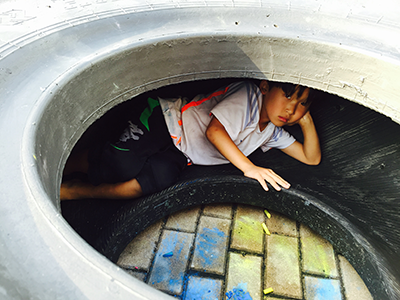
[Spectator] In one’s own way ©Jin Yim |
Numerous citizens, arts and culture policy institutions and even those in the arts scene don’t regard street arts as an independent genre. In general, street arts havebeen considered part of entertainment vitalizing the city. In 2017, Korea Street Arts Association conducted a survey on the current state of street artists. Asked about improvements to make for the development of Korean street arts, about 40% of the respondents said, “raising awareness of the characteristics of street arts as a genre.” This issue isn’t limited to those outside the street arts scene. It is necessary to understand and share thescope of street arts so that relevant public institutions and those in the street arts scene can reach a consensus.
In the mid-2000s, Korean street arts were at their early stage. At that time, most of the street performances communicated with body language or objets. The circus, whose body movements form its major language, has met the audience as street arts, or as street arts festivals more exactly. Over the recent few years, support forcreation and distribution of the circus has become active. Under these circumstances, circus artists have performed in an independent genre called “contemporary circus.” Furthermore, there are numerous street arts companies that don’t define themselves as circus artists but that use the human body as their major language and as a major tool of their artistic embodiment. So in Korea, the border between the circus and street arts isn’t clear in terms of genres.
However, in street arts, the site-specific aspect is an essential element defining the genre. In contrast, the circus can be staged not only onthe street but also in an indoor space. Considering this, the circus couldn’tbe a subgenre of street arts. The same is true for the theater. Even if a play is presented on the street, the theater isn’t regardedas a subgenre of street arts.
The meaningfulness of clarifying the concept of street arts doesn’t consist in differentiating street arts from the existing genres to findtheir own characteristics. Moreover, it is not to place street arts above theother genres. The twelve companies selected for this book have ceaselesslytried to meet the “street” and the “public” with their own methodologies in order to generate ripple effects. The distribution of such ripple effects allows us to see the diverse and complex comprehensiveness of Korean street arts. That is why the book is entitled “Spectrum” This work is about confirming that street arts have always written the history of contemporary artists vibrantly communicating with citizens on the street and about adding future challenges for street arts.








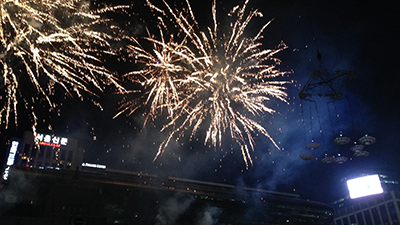
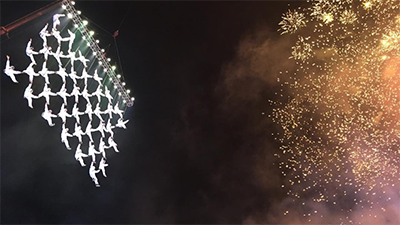
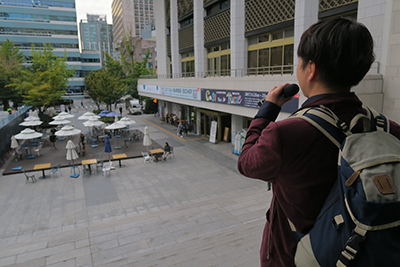
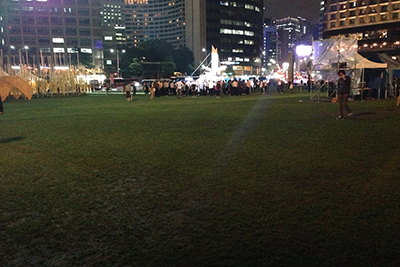
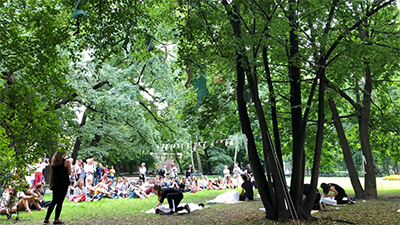
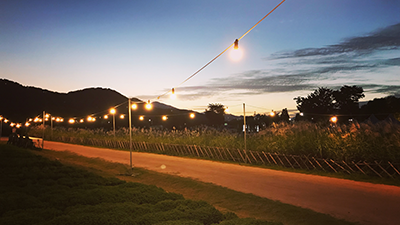
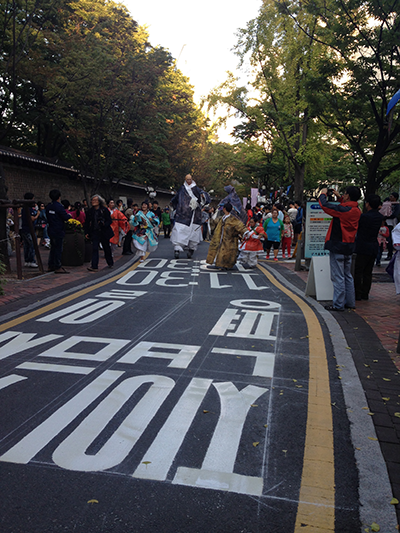
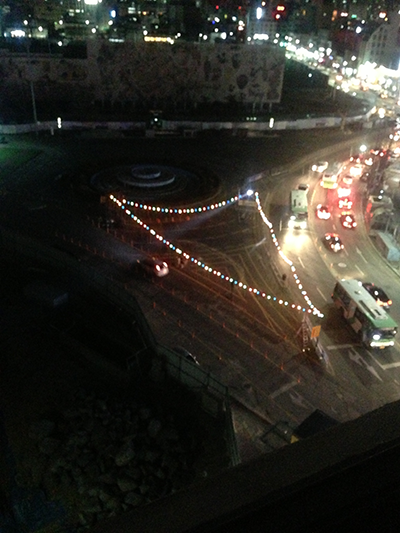
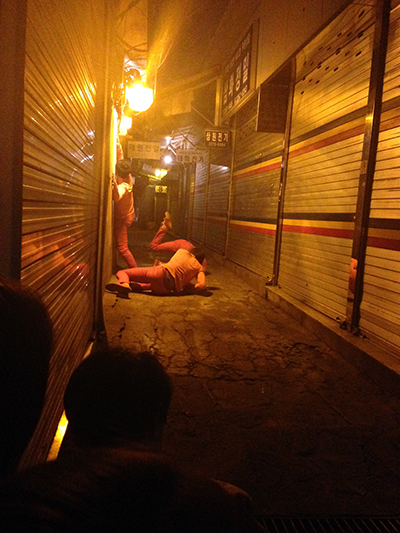
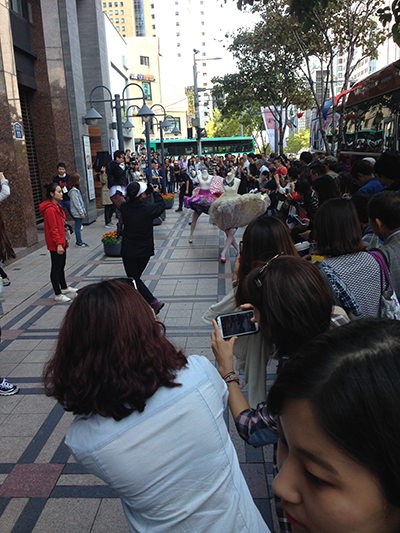
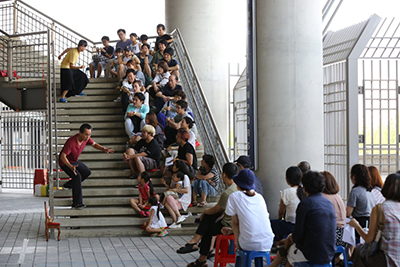
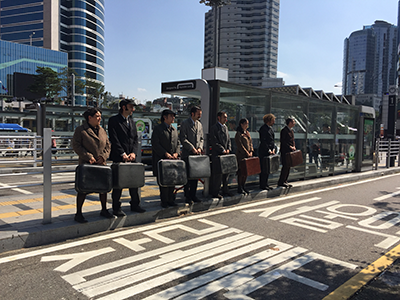
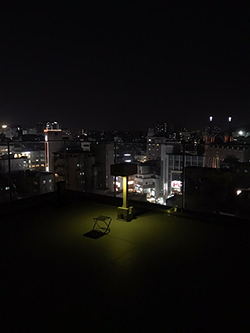
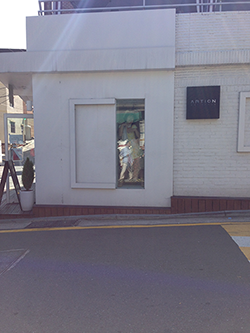
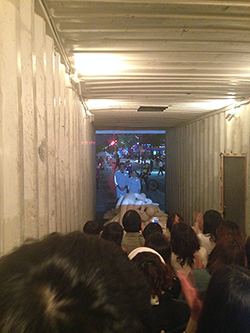
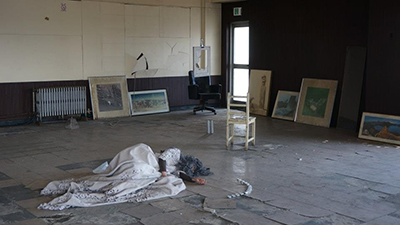
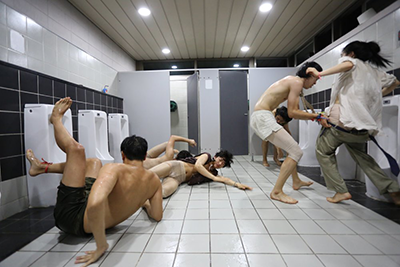
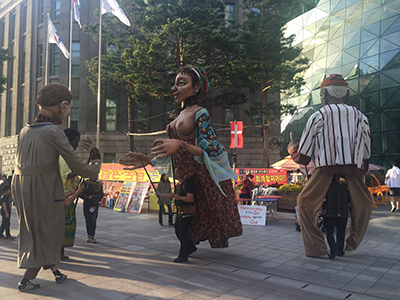
 PREV
PREV
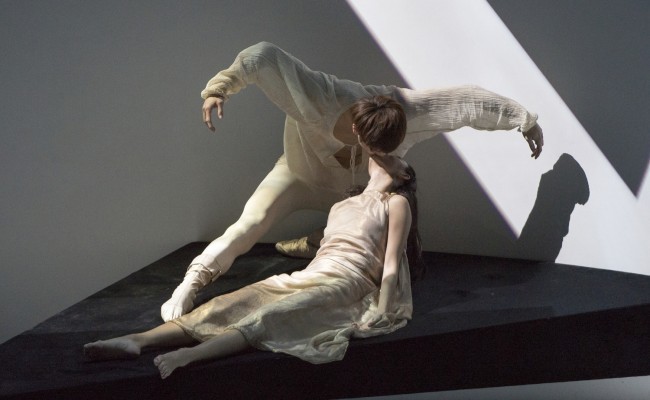
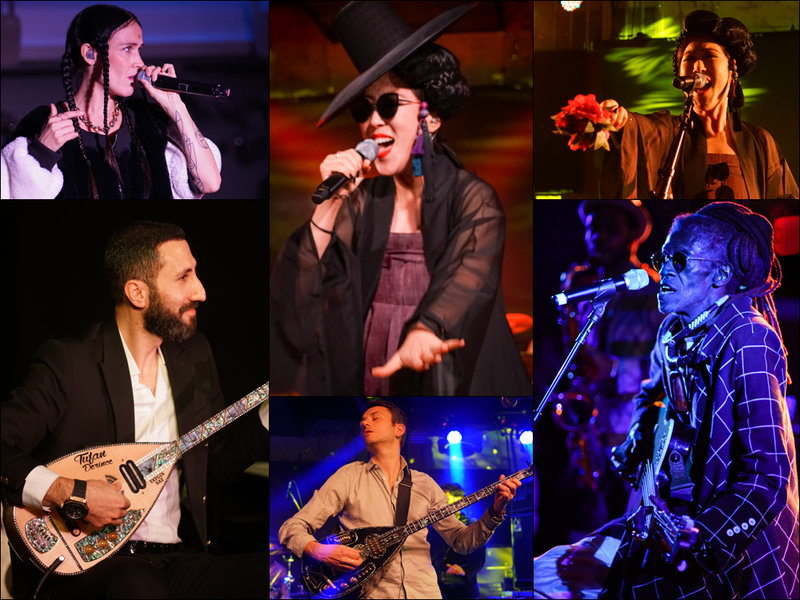
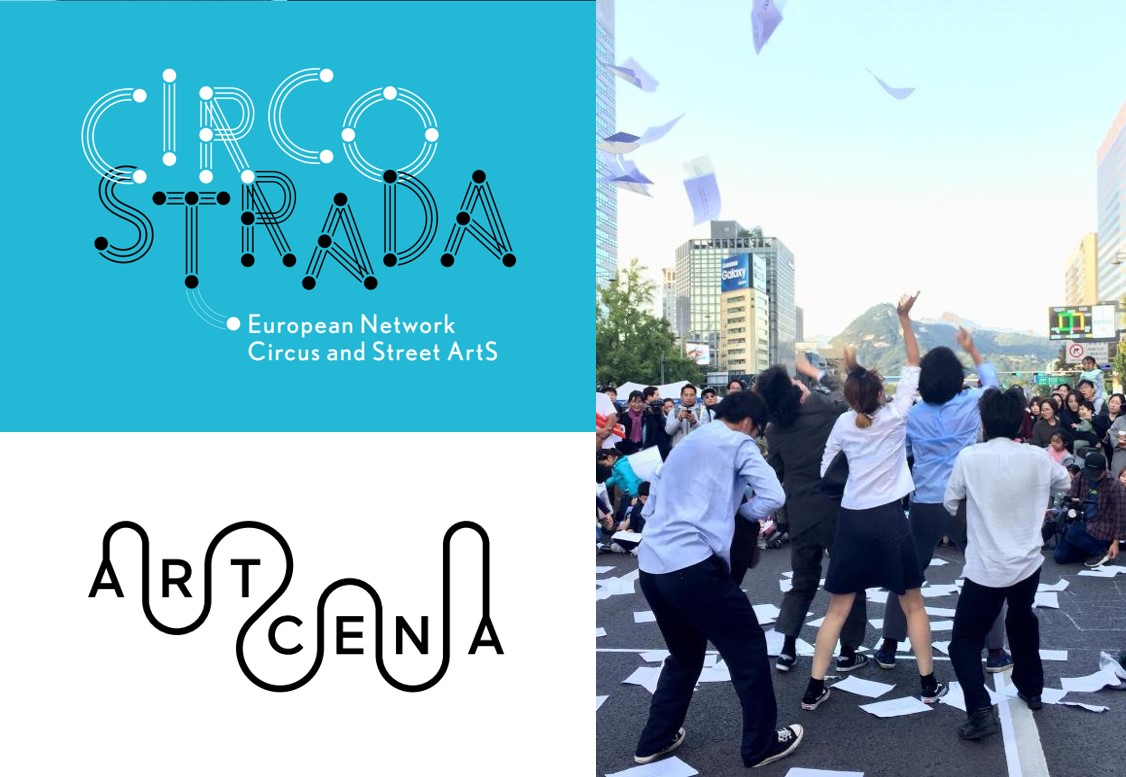
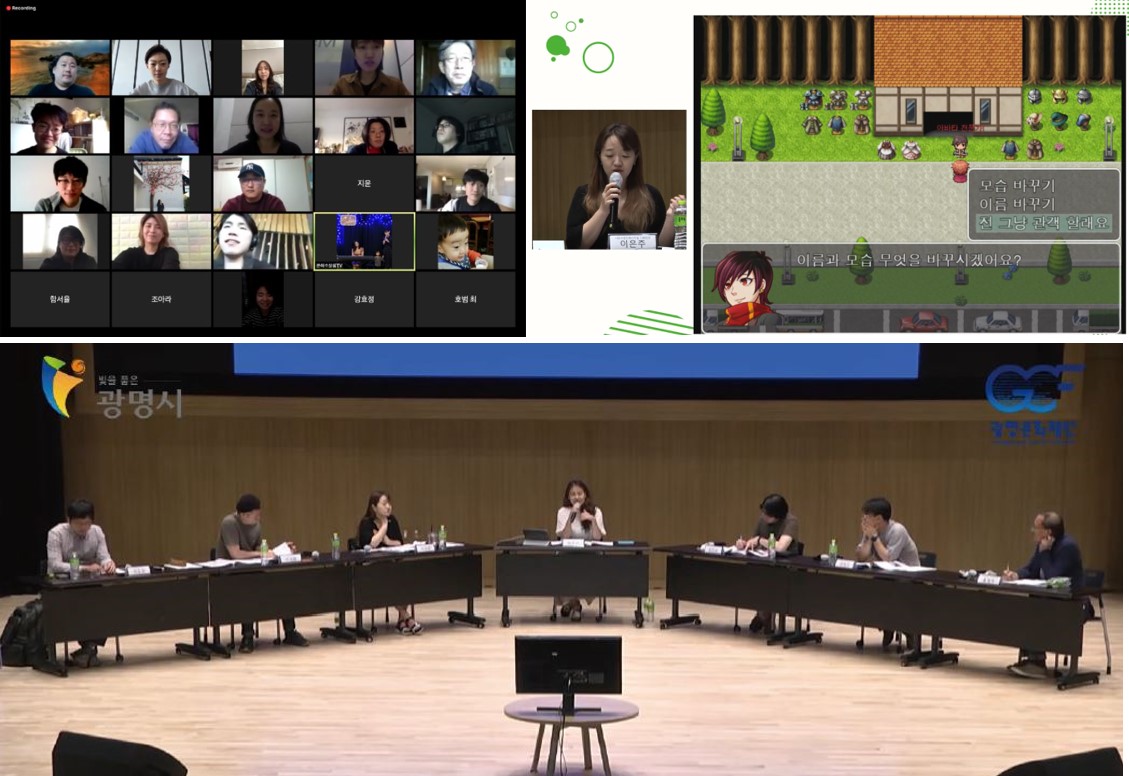
.png)
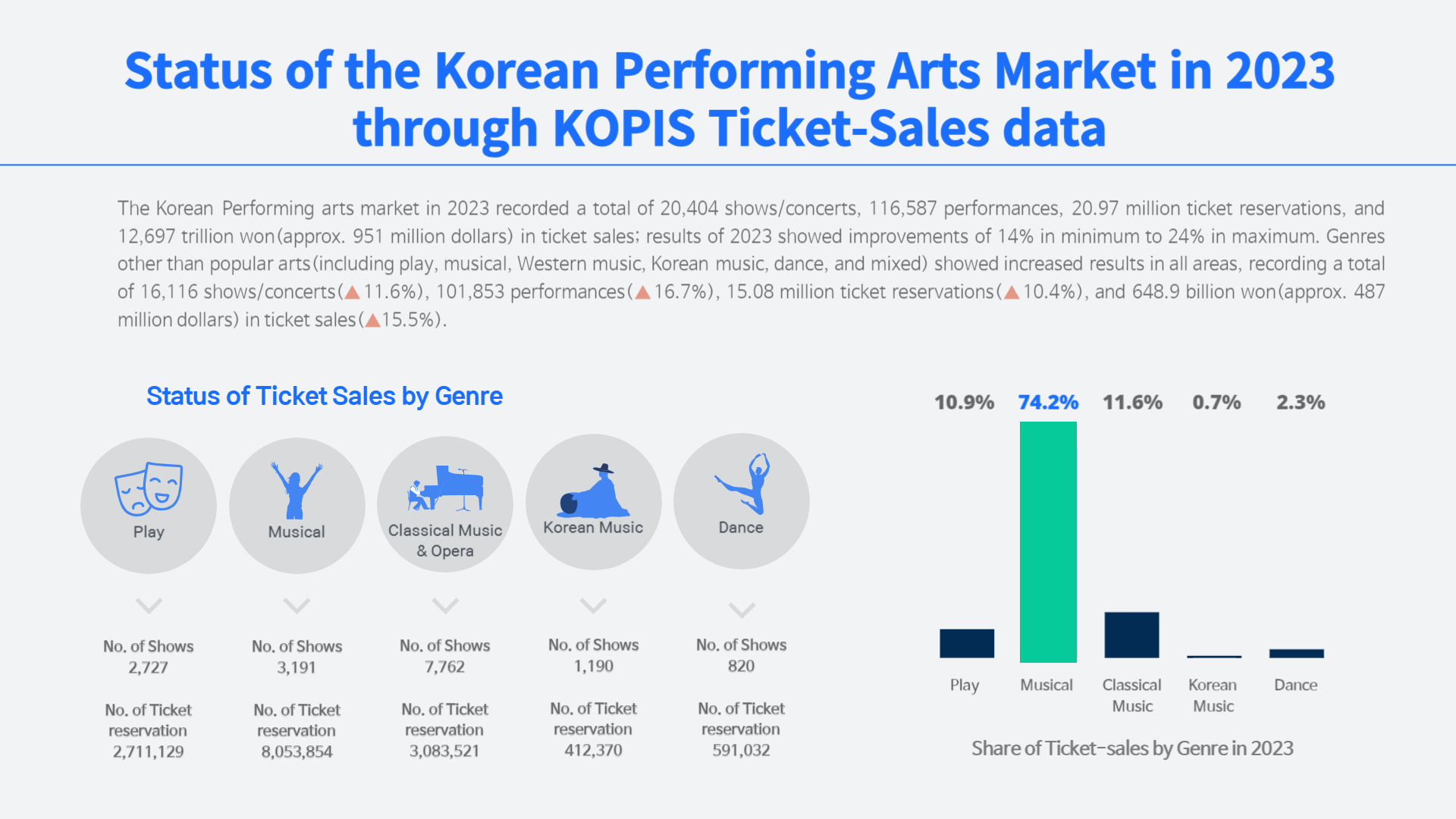
.jpg)
.jpg)
.jpg)
.jpg)











